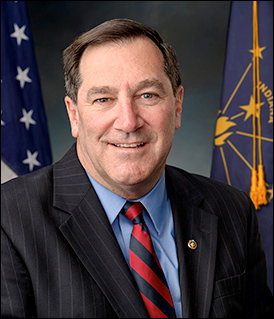
Eleven national polls were reported at this closing of the election period, and they’re all over the map. Six give Pres. Barack Obama a national lead of one to four points, three have the race tied and two show Republican Mitt Romney with a slight one point edge. The campaign, still, on Election Day, is too close to call.
All of the earliest-closing states are key for tonight. Polls begin to close at 6 pm in parts of Indiana and Kentucky and 7 pm EST in the remaining regions of these two states and Vermont, South Carolina, Georgia, and all-important Virginia and Florida (except for the western panhandle, which is in the Central time zone; normally, results are withheld from release until the entire state closes). Excluding Vermont, Romney needs to sweep these states, and most particularly Florida. Should he fall in the Sunshine State, then the predicted late night election result will conclude early, because he simply cannot compensate elsewhere for failing to capture its 29 Electoral Votes.
With Ohio, which appears to be the decider of this election, continuing to teeter, Virginia becomes that much more important for Romney. Though he could theoretically win the Electoral College vote without either the Buckeye State or Old Dominion, it is clear that he must carry one of the two. Practically, looking at the final trends in other swing states such as Nevada and Iowa, it is becoming apparent that both Ohio and Virginia need to go Romney in order for him to win.
Thirty minutes after the first wave of states close at 7 pm, North Carolina, West Virginia and Ohio itself will conclude their election period. Romney must carry both NC and WV, and then we concentrate on the Ohio trend for the rest of the evening.
At 8 pm Eastern, about half of the states will be closed, including everything in the central and eastern portion of the country with the exception of swing state Iowa, which doesn’t close until 10 pm EST.
In the 9 pm EST belt, look at the critical secondary swing states of Wisconsin and Colorado. At that point, with the exception of Nevada, which now looks to be trending definitively toward the president, the election-determining states will be closed and their early trends will have already been released in most of the country.
It is likely to be a long night, and though it is generally a bad sign for an incumbent to have the polling numbers of Obama — that is, still not having a clear winning spread on the morning of Election Day and the late trends favoring the challenger — the race is far from over.
Democrats appear poised to keep control of the Senate. In the early reporting zone, look to the Indiana race between Rep. Joe Donnelly (D-IN-2) and state Treasurer Richard Mourdock. The Republicans need to hold the open seat (Sen. Richard Lugar was defeated in the Republican primary), but trends are clearly favoring a Donnelly upset. Without Indiana, it will be extremely difficult for the GOP to have a realistic chance of capturing the four Democratic seats they need to wrest control away from their opposition. Republican losses in Maine and Massachusetts in the 8 pm hour will seal their fate.
In the House, watch two seats as the polls close at 7 pm. The southwestern IN-8 district of freshman Rep. Larry Bucshon is marginally in play. Bucshon winning early will be a good sign for Republicans. Rep. Donnelly’s open 2nd CD should go Republican in the person of former state Rep. Jackie Walorski. A Democratic victory in either would likely spell doom to the GOP hopes of gaining congressional seats, but still won’t put the majority in danger.
Kentucky, also a 7 pm closer as noted above, is the fastest vote counter of all the states. Here, watch the 6th District re-match campaign between Rep. Ben Chandler (D) and challenger Andy Barr (R). This was the second-closest election in 2010 and figures to be competitive again. If their quick count doesn’t show a Chandler victory, then the Democrats could be in for a longer night than expected in the House races.
Just a thought: you might want to print out this post and keep it handy so you can check off items above as the evening moves on.
It’s been quite a ride throughout the 2012 election cycle and, even as voting is now well underway, the final result is not yet clear.


